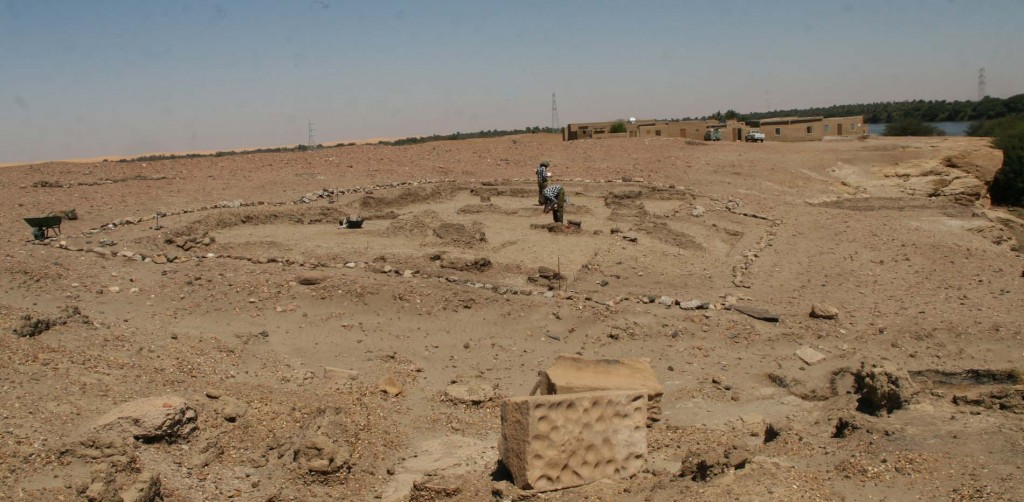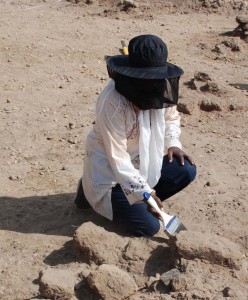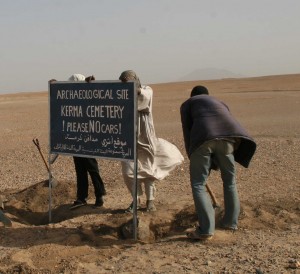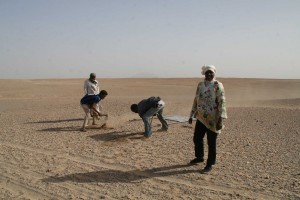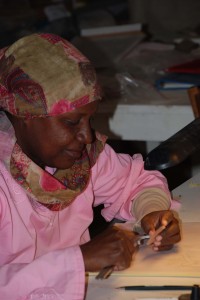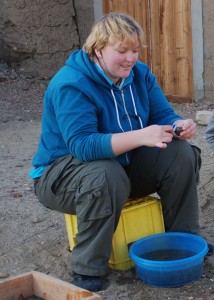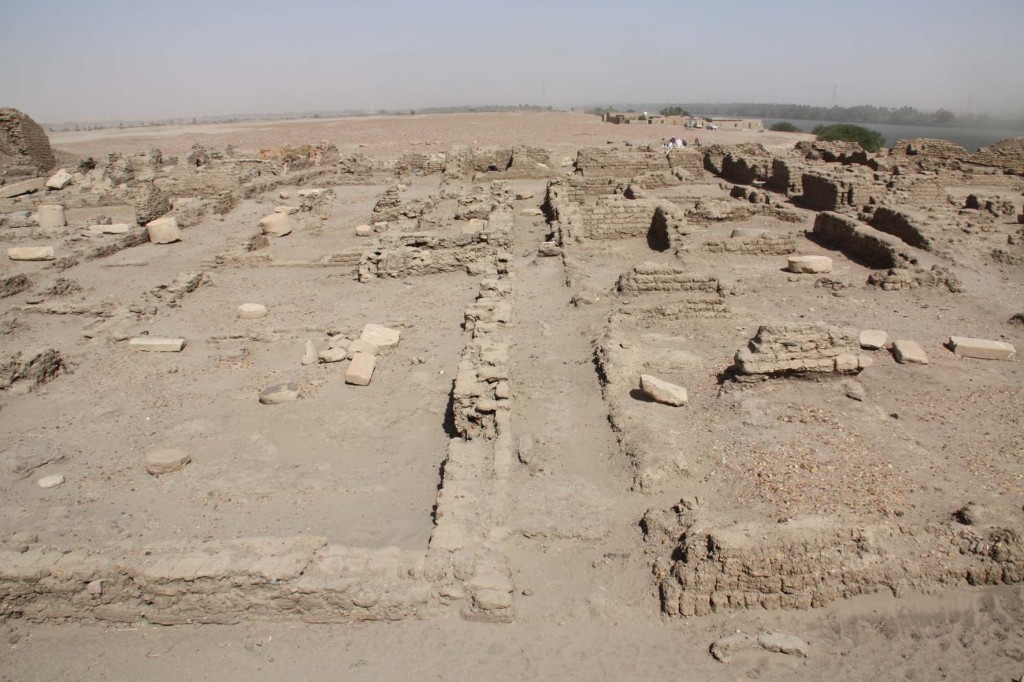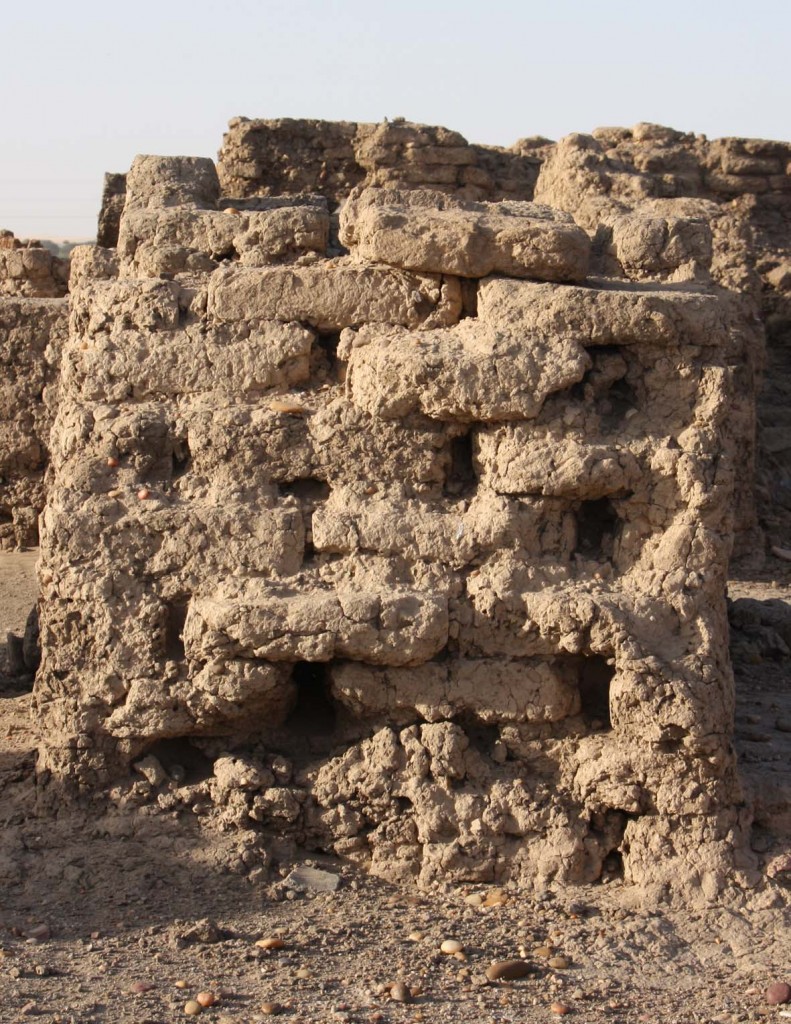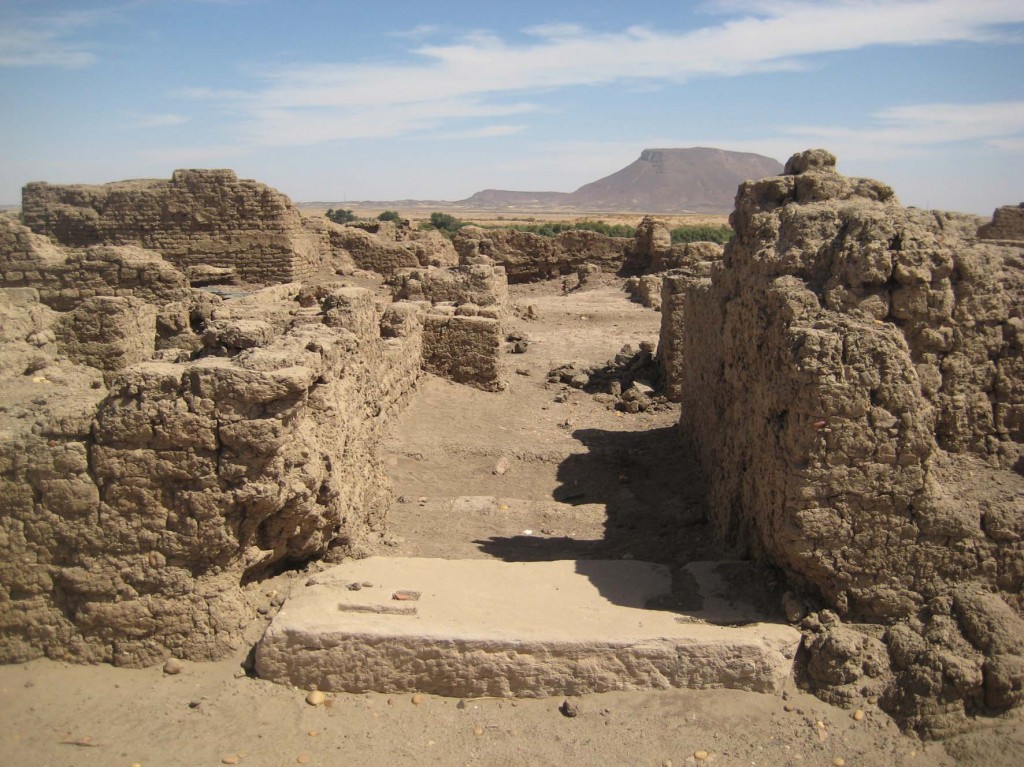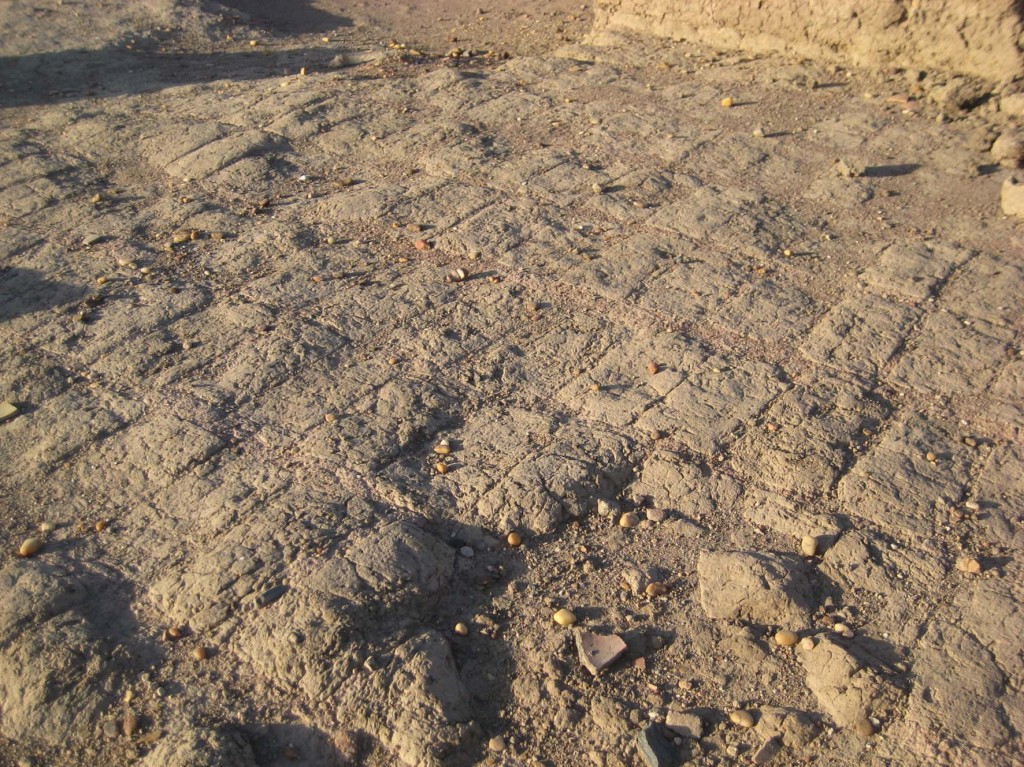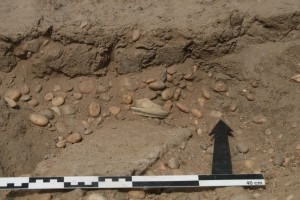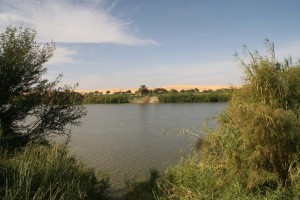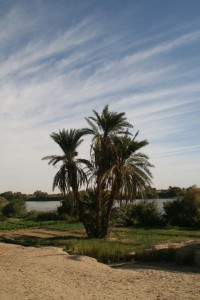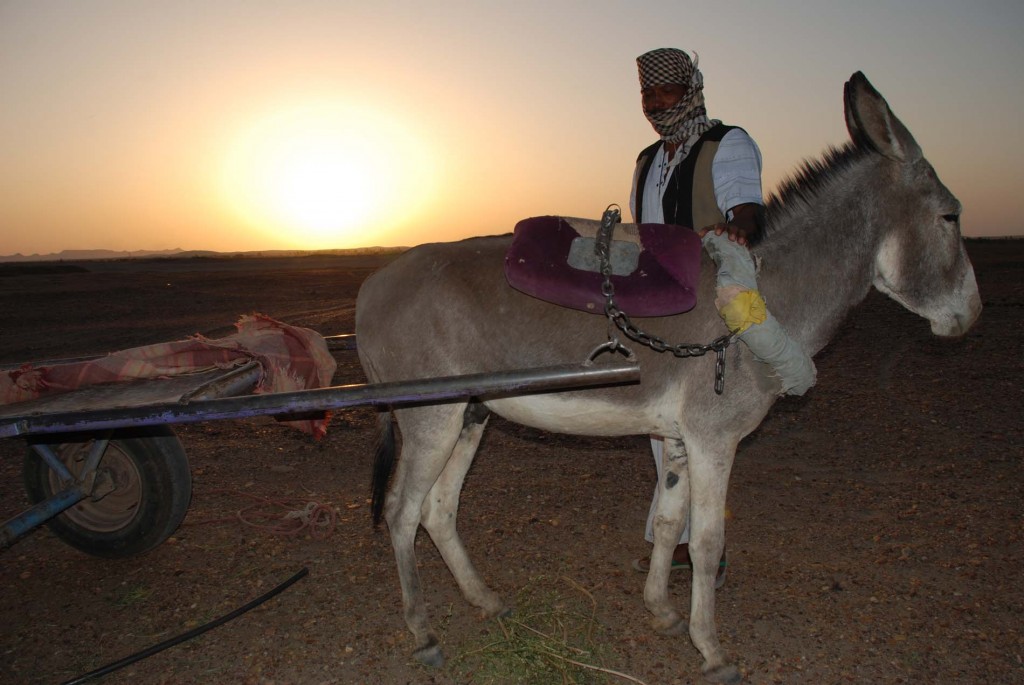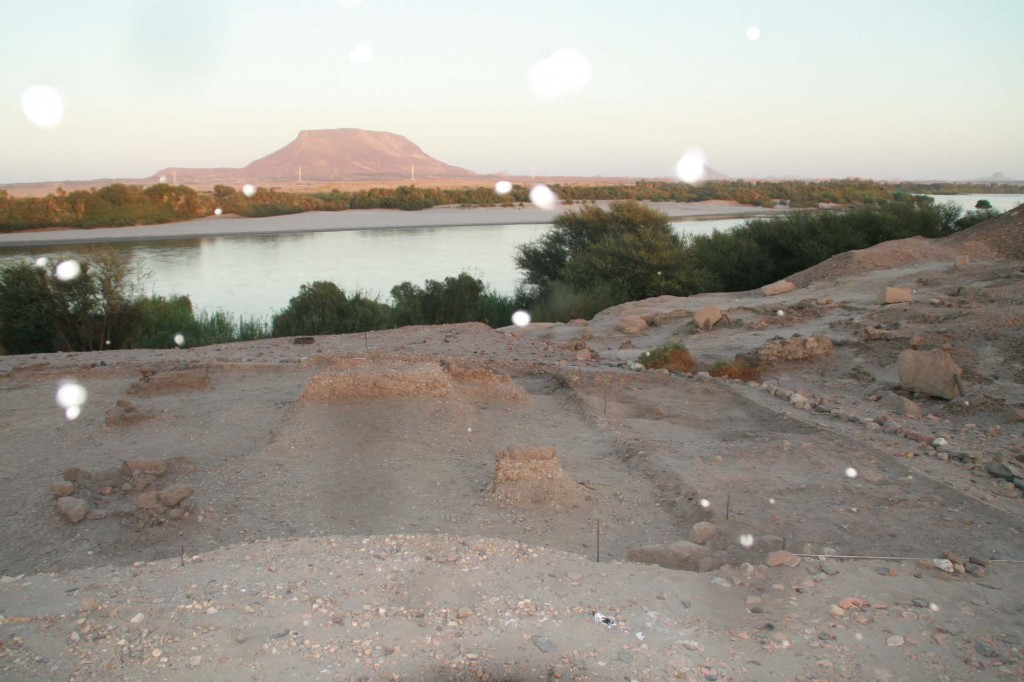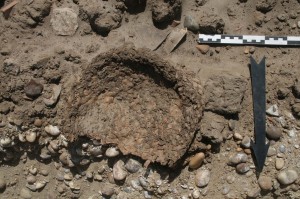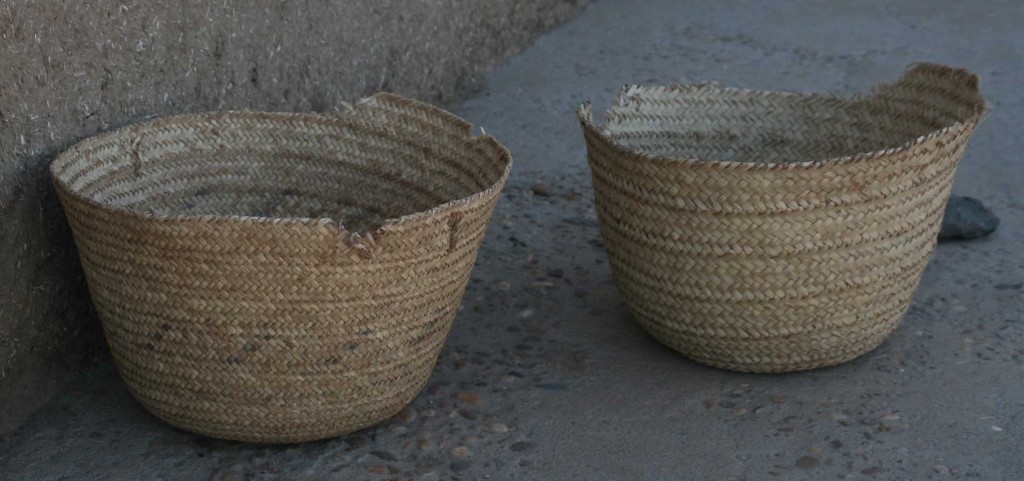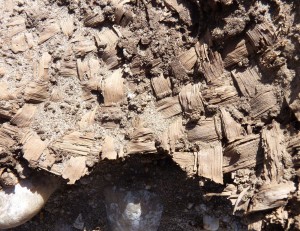Having finished excavating Square 2b, the southern extension of our area SAV1E in the New Kingdom town, I would like to come back to some of my thoughts at the very beginning of our work there: It intrigued me from the start that especially in the southern part there are so numerous fragments of bread moulds – several hundreds of fragments were found this season, the detailed quantitative analysis is still on-going. Naturally, we connected this frequent appearance of bread with the neighbourhood to Temple A, located just 30 meters further to the South.
Today, having completed the section drawing of the Southern baulk of Square 2b, I noticed again a high number of bread cones and some ashy areas. It is especially feature 26 which is interesting in this respect and it shall be briefly introduced here: From the very start of digging, the South-western corner of Square 2b comprised a sandy depression and a lot of mud brick fragments.

Overview of eastern part of Sq. 2b – feature 26 is visible in the background.
We soon labelled this “feature 26”, obviously a kind of pit in the surroundings of feature 26 and not too far away from the storage bin 14. Going deeper and cleaning all the collapsed bricks, the size of feature 26 decreased from 1.85 x 2,05 m to just 1.30 x 1.70 m – but its outline became much clearer! Its eastern side is quite well preserved, no matter that the bricks are very decayed. It definitely had once a circular shape and both inside and towards the western part there were ashy deposits – and again, a large number of bread moulds appeared!
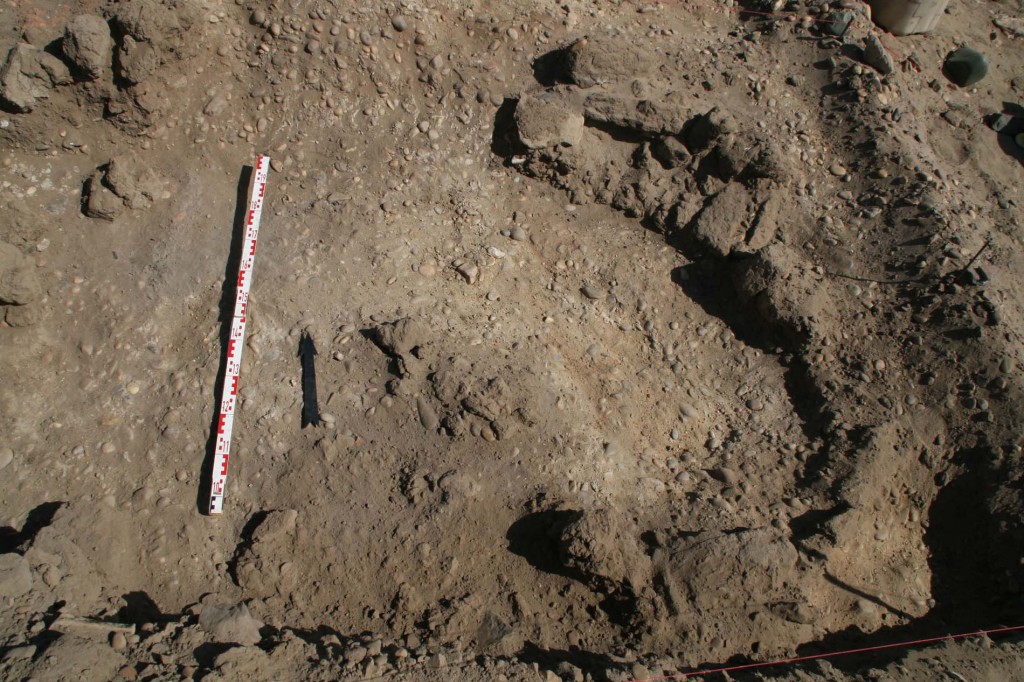
Feature 26 in its final state of excavation.
Altogether, feature 26 might really represent the remains of an oven – and maybe an area for heating the typical bread cones.
As feature 26 is located well outside of Building A, set against the natural gravel deposit on the sloping ground at the southern area of SAV1E, I tentatively propose that this structure belongs to some kind of an industrial zone between Temple A in the South and Building A in the North.
 etic Club here in Khartoum. Tomorrow, at 7.30 pm I will present our latest findings of this season: “New Archaeological Fieldwork on Sai Island, New Kingdom Town”.
etic Club here in Khartoum. Tomorrow, at 7.30 pm I will present our latest findings of this season: “New Archaeological Fieldwork on Sai Island, New Kingdom Town”.
